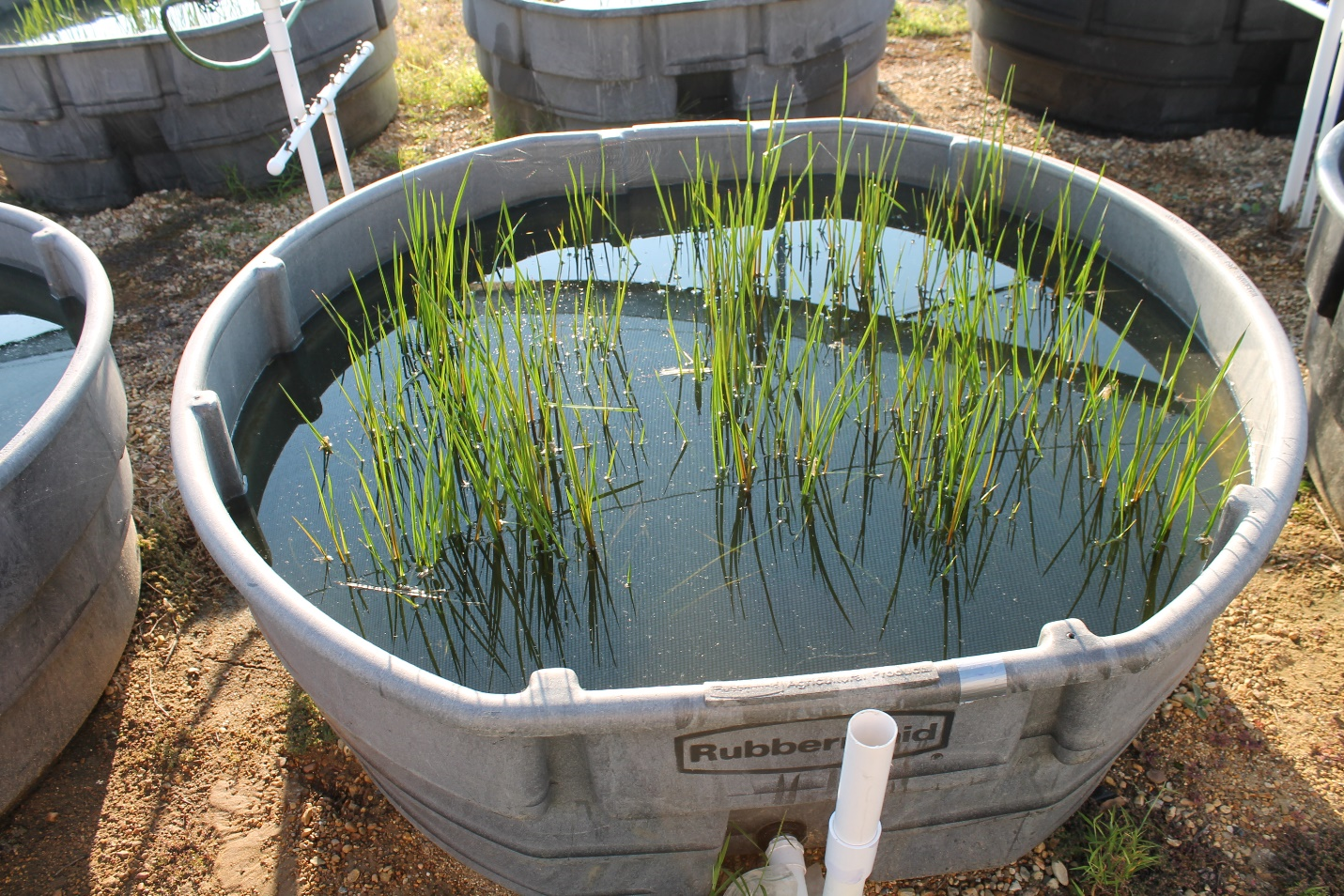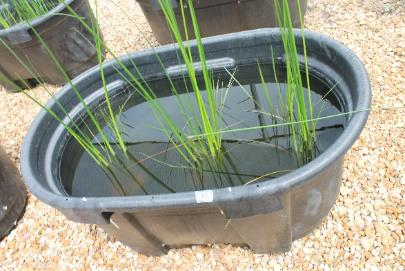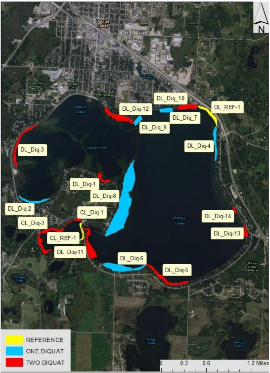Aquatic Invasive Species: Flowering Rush
Project Impacts
Task 1: Gain a better understanding of the flowering rush life cycle.In recent years, flowering rush has expanded its invaded range southward in the U.S. into the Mississippi and Missouri rivers. Understanding the phenology (life cycle) of invasive plants can assist resource managers when developing management strategies for nuisance populations. Some invasive aquatic plants can have vastly different phenological patterns across their invaded ranges. A two-year mesocosm experiment was conducted in Mississippi to better understand flowering rush phenology in the southern U.S. This work found that flowering rush is well suited to grow in the southern U.S. as the plant has a longer growing season and produces more propagules in the southern U.S than northern populations. Therefore, resource managers in these areas will have to focus management strategies that reduce propagules to attain long term control; however, managers should have a longer window of opportunity to implement control strategies in southern populations.
Impact: This project provided data to help resource managers target the best time of year to conduct management activities to maximize flowering rush reduction.

Flowering rush is an aggressive invasive aquatic plant that can displace many native aquatic/wetland plants thereby disrupting ecosystem processes and impacting human uses of waterbodies. Prior to 2015, operational management in the Detroit Lakes, MN successfully reduced flowering rush utilizing two sequential applications of the herbicide diquat. However, at some local sites within the Detroit Lakes system, it took multiple years of diquat use to achieve long term control of flowering rush. Additionally, there was concern that diquat may cause collateral damage to the native hardstem bulrush that is utilized as spawning and feeding habitat by many native fish species. Sites with intermixed stands of flowering rush and bulrush weren’t being treated with diquat due to the potential negative impacts to bulrush. These sites provided refugia for flowering rush from herbicide and allowed the species to continue to spread in the Detroit Lakes system. This research was undertaken to determine if a more aggressive diquat protocol or other herbicides would selectively reduce flowering rush intermixed with hardstem bulrush better than the existing operational protocol. Diquat and endothall were both determined to provide selective control of flowering rush; however, a more aggressive approach (4 herbicide applications per year) did not provide better control than the existing protocol.
Impact: This project gave resource managers the data they needed to attain permits to apply herbicide in intermixed stands of flowering rush and hardstem bulrush. This resulted in selective reduction of flowering rush in sensitive locations and the subsequent reclamation of beneficial habitat for native aquatic fauna.

Aquatic resource managers have limited resources to combat aquatic invasive plant species (AIS) infestations. Methodologies that control AIS with minimum resources should help managers allocate resources to other issues they face. One such AIS, flowering rush, was operationally managed with sequential herbicide (diquat) applications in the Detroit Lakes, MN until 2015. In 2016, Zebra mussels arrived in the Detroit Lakes system and there were limited resources to address both AIS. This project was undertaken to determine if an adaptive approach could be utilized to continue reduction of flowering rush while allowing financial and human resources to be reallocated to the new threat from Zebra mussels. This work found that reduced diquat use in low density sites-maintained control of flowering rush while the standard operational protocol continued to reduce flowering rush in high density sites. This resulted in conversion of high-density sites to low density sites that required less management resources.
Impact: This adaptive approach reduced flowering rush from 316 acres to less than 20 acres in 4 years, maintained a stable native plant community, and reduced herbicide (and thus financial) inputs 25 to 33% compared to the previous operational strategy while allowing resource managers to shift focus to a new invasive species.

